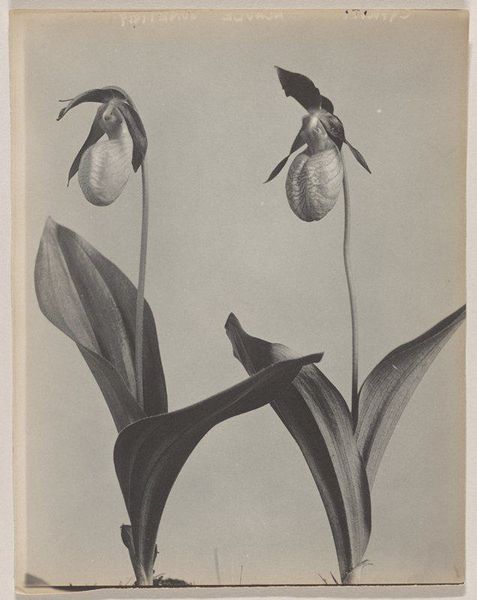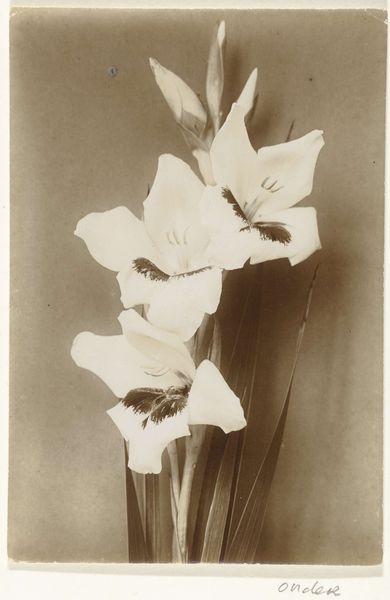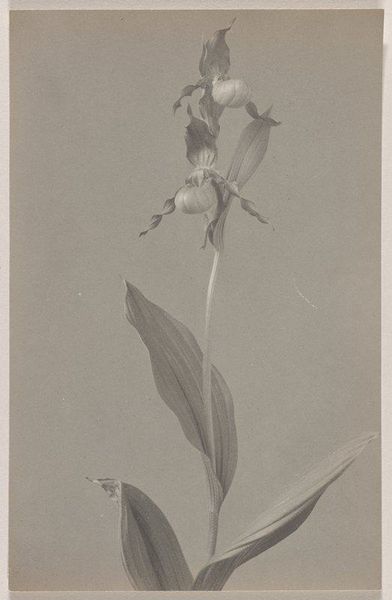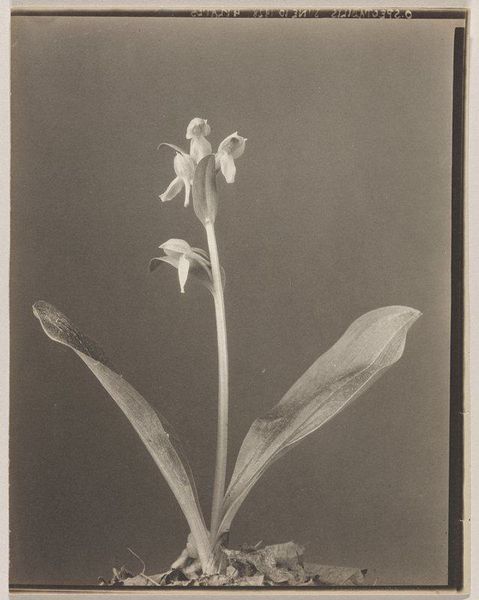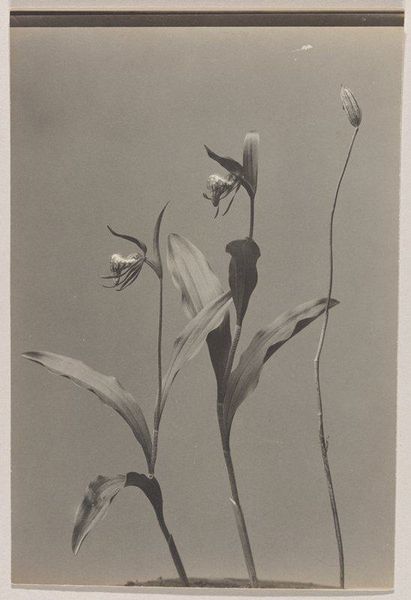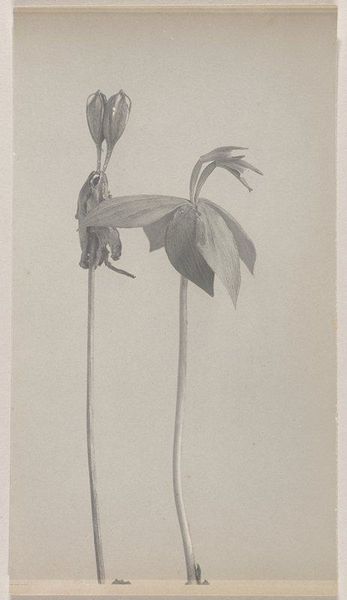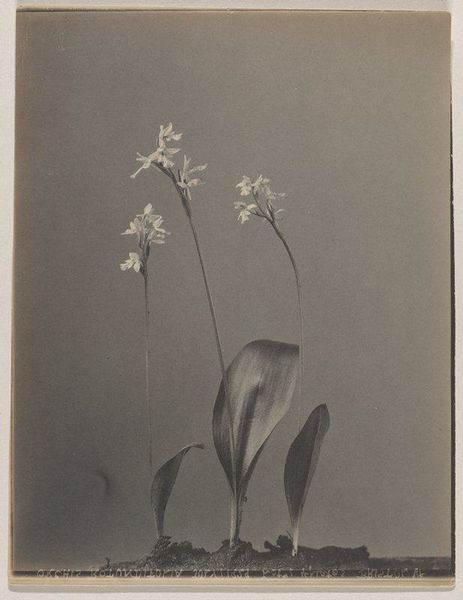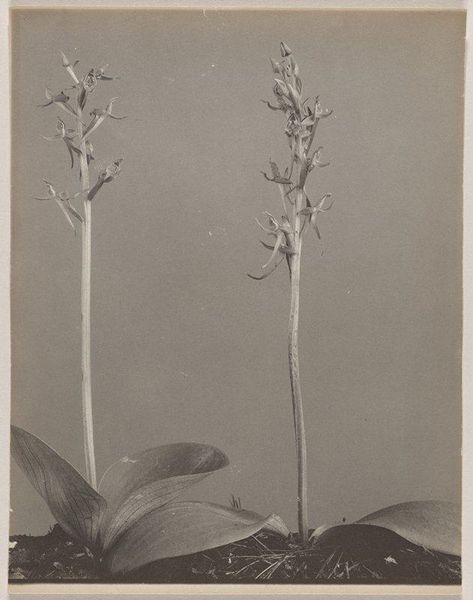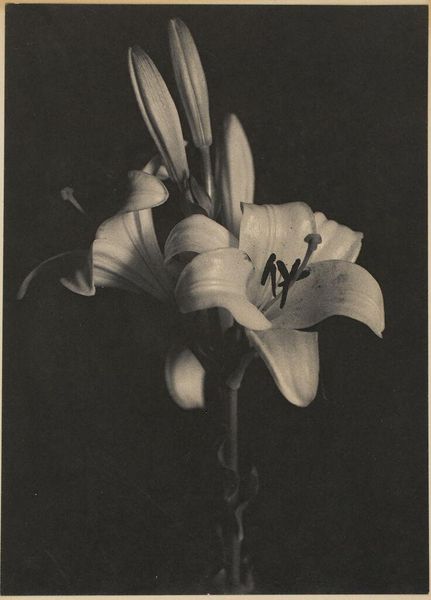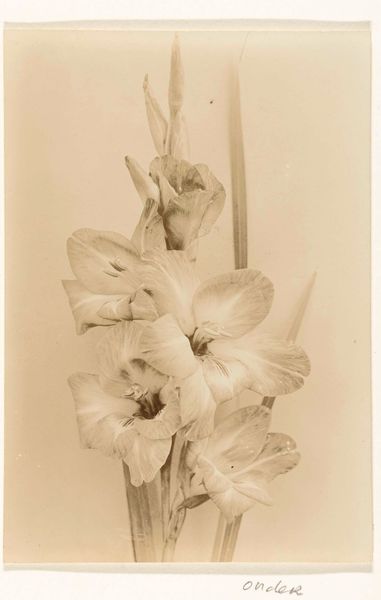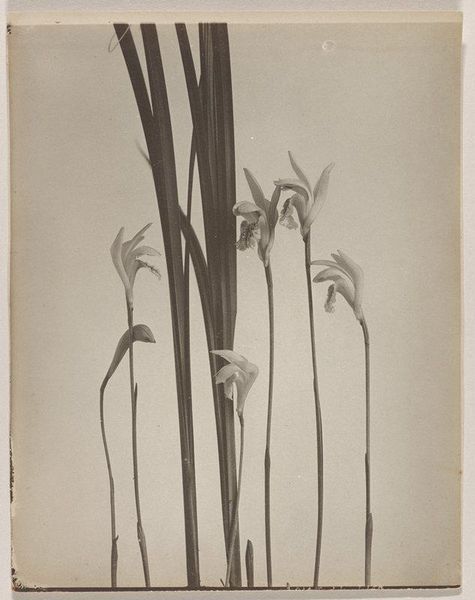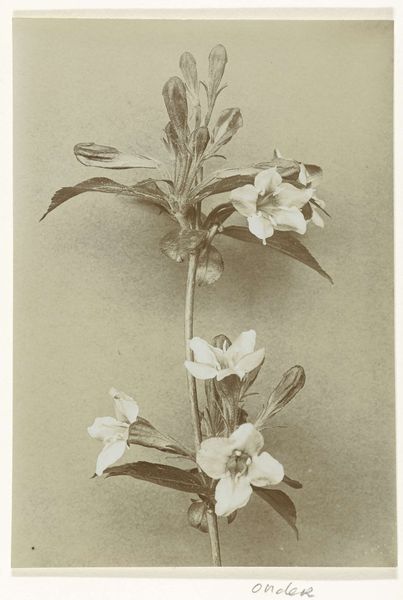
Cypripedium parviflorum var. pubescens- Larger Yellow Lady's Slipper 1931
0:00
0:00
photography
#
portrait
#
still-life-photography
#
sculpture
#
charcoal drawing
#
photography
#
surrealism
#
united-states
#
naturalism
Dimensions: 9 11/16 x 7 5/8 in. (24.61 x 19.37 cm) (image)9 7/8 x 7 13/16 in. (25.08 x 19.84 cm) (sheet)
Copyright: No Copyright - United States
Editor: We’re looking at Edwin Hale Lincoln’s "Cypripedium parviflorum var. pubescens - Larger Yellow Lady's Slipper" from 1931, a photograph. The flower almost looks like a delicate sculpture. It’s beautifully lit, highlighting all the subtle textures of the petals. How do you read this photograph, considering its place in art history? Curator: This photograph is intriguing precisely because it exists at the intersection of art, science, and social concerns. During the early 20th century, photography was gaining recognition as an art form, but it was also crucial for scientific documentation. Lincoln’s detailed depiction of this rare orchid serves both purposes. The Lady’s Slipper, already vulnerable at the time, underscores anxieties about environmental conservation emerging then. Do you notice how the composition isolates the flower? Editor: Yes, it feels very deliberate, like a specimen pinned for study, and the light focuses all attention there. Did this method of depiction reflect broader concerns about how we perceive and interact with the natural world? Curator: Precisely. Consider the broader social context: the rise of industrialization and urbanization was leading to a growing disconnect from nature. Photographs like these, displayed in galleries and publications, acted as both records and perhaps warnings about what was being lost. Lincoln wasn't simply capturing a flower; he was capturing a symbol of a disappearing landscape. Think about how the romantic movement of the prior century used detailed nature illustration as well. Editor: So it’s about the photograph’s dual role – documenting the present and prompting concerns about the future? Curator: Absolutely. Furthermore, the presentation within museum contexts shapes its interpretation. Exhibiting such works prompts viewers to consider their own relationship with the environment and the legacy of early conservation efforts. Are we still telling the same story today? Editor: Definitely gives me a lot to think about. It shows how one photograph of a flower can unpack so many deeper ideas about society and its values. Curator: Exactly! And that's what makes studying art history so rewarding - it teaches us to see beyond the surface and consider the broader implications of artistic expression.
Comments
No comments
Be the first to comment and join the conversation on the ultimate creative platform.
